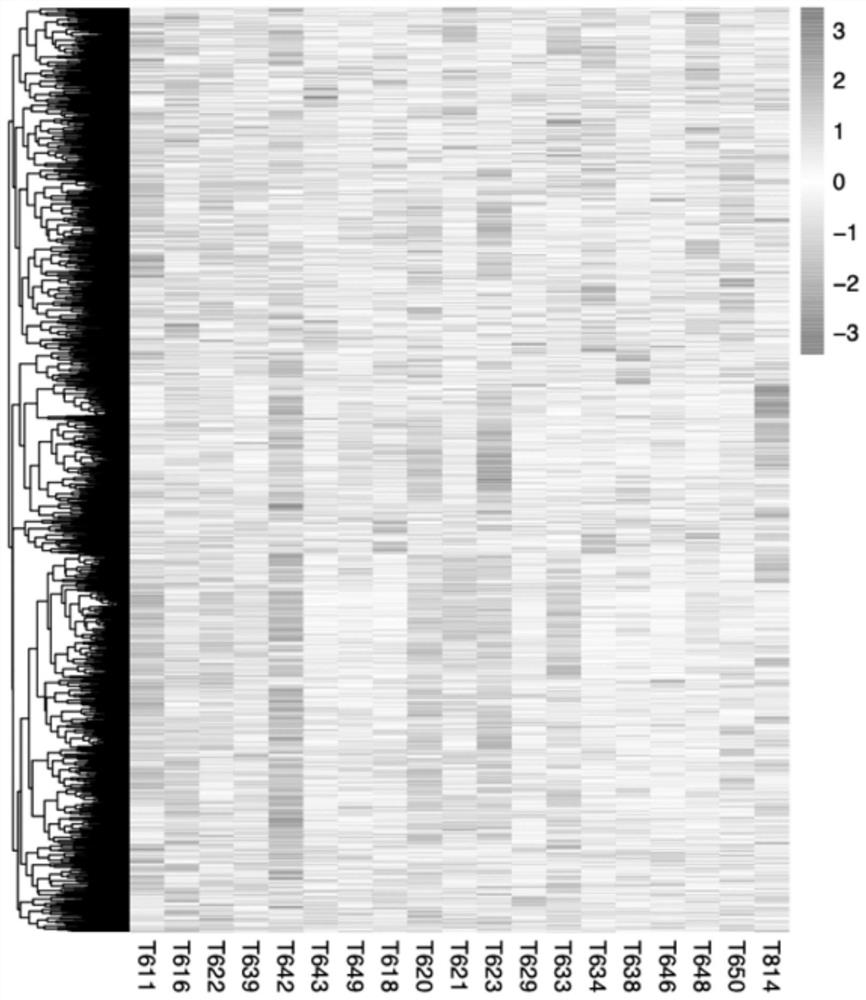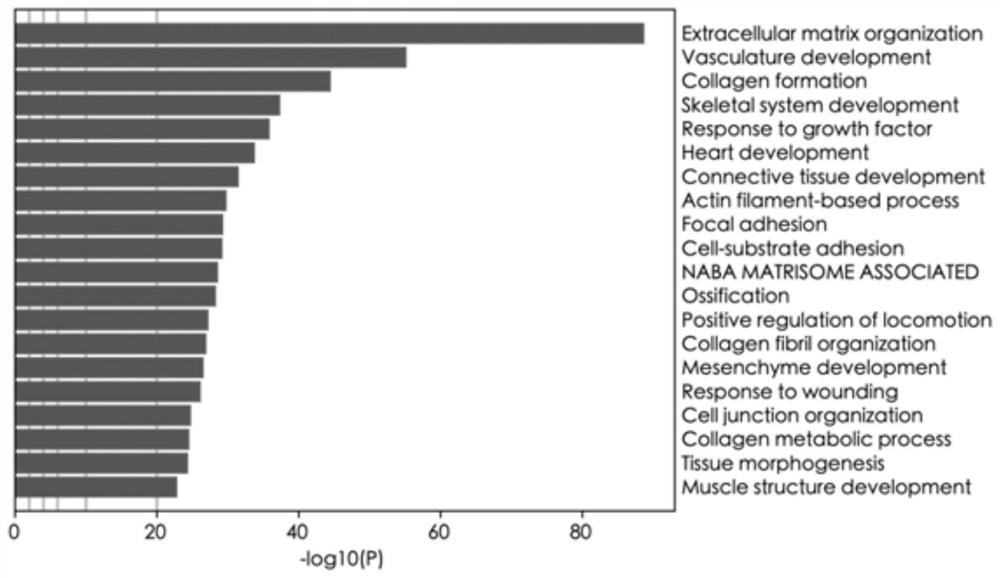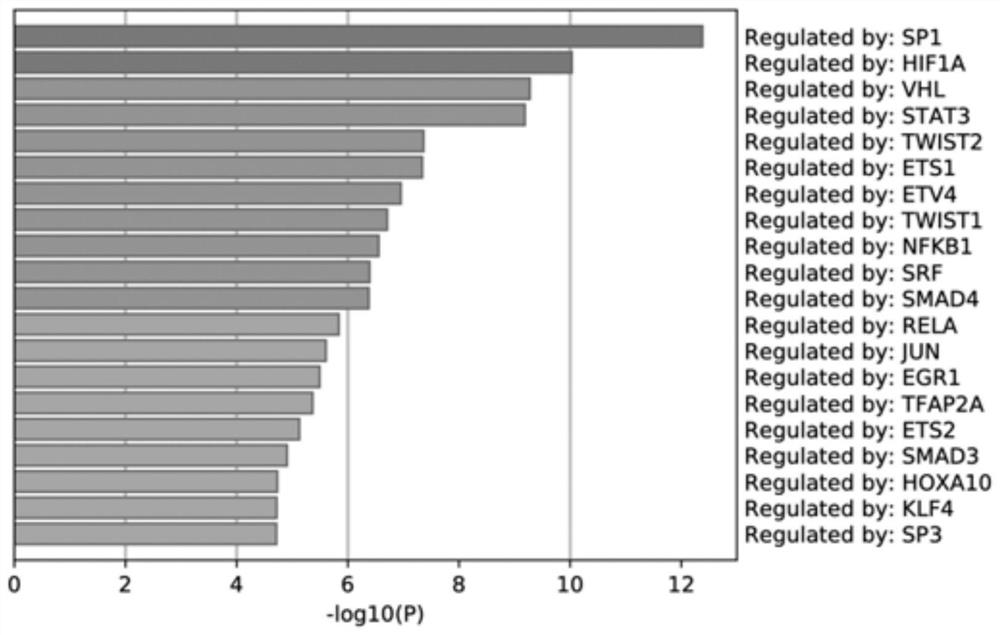Application of VAV2 in prediction of radiotherapy sensitivity and prognosis of patient
A sensitive and patient technology, applied in the field of VAV2 in predicting the radiotherapy sensitivity and prognosis of patients, it can solve the problems of poor clinical benefit, poor efficacy, and differences in the efficacy and prognosis of individual radiotherapy for esophageal cancer.
- Summary
- Abstract
- Description
- Claims
- Application Information
AI Technical Summary
Problems solved by technology
Method used
Image
Examples
Embodiment 1
[0156] Example 1. Screening of genes related to radiotherapy sensitivity in esophageal cancer
[0157] In order to discover genes related to radiotherapy sensitivity in esophageal cancer, the present invention uses a PDX (Patient-Derived Xenograft, PDX) mouse model derived from esophageal cancer patients. By irradiating PDX with the same dose, the radiotherapy efficacy of patients was divided into sensitive and resistant. Subsequently, combined with patient gene sequencing data, differentially expressed genes that affect radiation efficacy were discovered. And use GO enrichment analysis to verify the reliability of the experiment. The accuracy of the data in this study was verified by enrichment analysis of transcription factors in the TRRUST database.
[0158] figure 1 It is to compare the transcriptome sequencing data of the sensitive group and the resistant group, and visualize the clustering heat map of the Heatmap formed by using the R software for the differential ...
Embodiment 2
[0160] Example 2, Verification of VAV2 Overexpression Cell Line Construction by Lentivirus
[0161] Then we constructed a VAV2 overexpression cell line through lentivirus to determine whether VAV2 is related to radioresistance in gene function.
[0162] Figure 4The results of comparative experiments between control cells and cell lines overexpressing VAV2, the experiment of comparing control cells and cell lines overexpressing VAV2 through clone formation experiments, A is the plate formed after irradiating different doses of radiation, B is based on the ability of colony formation The plotted cell survival curve, p<0.05, C is the result of western experiment on the expression of VAV2 in two kinds of cells, which proves that the expression of VAV2 in the cell line overexpressing VAV2 increases.
[0163] Figure 5 The CCK-8 method is used to detect the proliferation ability of cells. The experiment found that irradiation significantly inhibited the proliferation ability o...
Embodiment 3
[0166] Example 3, siRNA interference technology knockdown VAV2 verification
[0167] In order to further verify that VAV2 is related to radiosensitivity in gene function, we used the tumor tissue derived from patients with esophageal cancer to construct the primary esophageal cancer cell line, named NCCE1, and the construction process was as follows: Figure 7 shown.
[0168] Knockdown VAV2 by siRNA interference technology, siRNA interference sequence: gggacgacaucuacgagga (SEQ IDNO: 5) The specific steps are as follows:
[0169] (1) The day before transfection, transfer the well-growing cells to a 6-well plate, with 350,000-550,000 cells per well, to ensure that the cell growth density reaches 40-60% during transfection.
[0170] (2) Before transfection, the cells were washed 3 times with PBS, and 1ml of Opti-MEM medium was added to wait for transfection.
[0171] (3) First, add an appropriate amount of siRNA to 250 μl Opti-MEM, mix gently, and incubate at room temperature...
PUM
 Login to View More
Login to View More Abstract
Description
Claims
Application Information
 Login to View More
Login to View More - R&D
- Intellectual Property
- Life Sciences
- Materials
- Tech Scout
- Unparalleled Data Quality
- Higher Quality Content
- 60% Fewer Hallucinations
Browse by: Latest US Patents, China's latest patents, Technical Efficacy Thesaurus, Application Domain, Technology Topic, Popular Technical Reports.
© 2025 PatSnap. All rights reserved.Legal|Privacy policy|Modern Slavery Act Transparency Statement|Sitemap|About US| Contact US: help@patsnap.com



